Up for review today is the one and only EVGA 850 BQ PSU (BQ-0850-V1) rated at 850W with an 80+ Bronze rating. EVGA offers a wide range of power supplies, especially in the 850W variety. The B(bronze)Q series is on the lower end of the spectrum since Bronze is the lowest rated power supply offered for EVGA’s 850W lineup. In this review we’ll take a look at two main factors: the overall build quality of the unit, and how it performs under stress.
In addition to the 850W BQ, EVGA also offers the PSU in 600W, 650W, and 750W varieties. This means EVGA 850 BQ, which we will be featuring, has the highest load rating out of the rest of the BQ lineup. There are many factors to consider when it comes to purchasing a new power supply such as power requirements, budget, port requirements, just to name a few. In my opinion build quality should be one of the top factors especially considering how vital the PSU is to the system as a whole. A cheap PSU can fail early, and not just fail, cause internal component failure as well if proper protections are not in place.
Fortunately EVGA offers many safety features with each of their BQ series PSUs. At a glance these features include OVP (Over Voltage Protection), UVP (Under Voltage Protection), OCP (Over Current Protection), OPP (Over Power Protection), and SCP (Short Circuit Protection). Hopefully we’ll be seeing some of these features in action further down the review!
Features and Specifications
The EVGA 850 BQ offers a wide range of features considering the fact that it is on the budget end of the spectrum. First, the PSU carries an 80+ Bronze rating. This means that the PSU will be at least 82% efficient under a 20% load and at least 85% efficient under a 50% load. Power supplies are designed with with the fact that there will be a continual load present and are therefore the most efficient under at load of 50%.
Cooling for the unit is done by a single variable speed 140mm fan located on the top of the PSU. According t o EVGA, the fan is near silent and will make virtually no noise when added to the PC case.
The EVGA 850BQ is also configured in a semi-modular design. The only non-modular, permanently attached cables are the 24-pin motherboard cable, a 6+2-pin PCIE cable and a single 4+4-pin CPU power cable.
Here are the power specifications for the 850 BQ:
| AC Input | 100 – 240 VAC, 12A, 50 – 60 Hz | ||||
| Rail | +3.3V | +5V | +12V | +5Vsb | -12V |
| Max Output | 24A | 20A | 70A | 3A | 0.3A |
| 70A | |||||
| 160W | 840W | 15W | 3.6W | ||
| Total | 850W @ +40C | ||||
Cable connectorsand types:
| 24 Pin ATX | 1x |
| EPS (CPU) | 2x8pin(4+4) |
| PCIE | 3x 8pin (6+2), 3x 6pin |
| SATA | 10x |
| Four-Pin Peripheral | 5x |
| Floppy | 1x |
Additional details:
| Operating Temperature | 0° to 40° C |
| Japanese Capacitors | Yes |
| ECO Mode | No |
| MTBF | 100,000 Hours |
| Net Weight | 7 lbs |
| Size | 85mm (H) x 150mm (W) x 140mm (L) |
| Approvals | TUV, CB, CE, FCC, RCM, cTUVus, BSMI, CCC, WEEE, RoHS Compliance with ErP Lot 6 2013 Requirement |
| Fan Size / Bearing | 140mm Teflon Nano-Steel Bearing |
Now that we’ve got a better understanding of what we’re going to be reviewing, let’s crack open the box and take a closer look!
A Closer Look at the EVGA 850 BQ PSU
Here we will take a look at the packaging designs and effectiveness as well as the PSU iteslf.
Packaging
The EVGA 850 BQ arrived in a cellophane wrapped cardboard box. The outside of the box featured EVGA designs and logos highlighting key aspects in several different languages of the PSU. The overall design was nice, easy to understand and definitely targeted towards the gamer, enthusiast crowd.
Upon opening the box, we can see the 850 BQ wrapped in a custom fitted foam sleeve sitting just underneath the instruction manual and warranty information. A bundle of modular cables sits to the right tied together by a single twisty tie.
So far the overall packaging is pretty lackluster. While this is a budget PSU and we were definitely not expecting any custom-fitted foam, some extra packaging material to fill some of the voids would have been appreciated. Now with the box open, let’s see what else is hiding in there…
A few more items! In addition to the PSU itself, manual, and modular cables, EVGA also included a heafty 14 gauge wall power cable (115V US), a reusable Velcro zip tie, and a PSU power-on plug for bench testing. The power-on plug was definitely a surprise and definitely useful when needing to troubleshoot PSU functionality.
This little plug effectively shorts the green Power On pin to ground (GND) on the motherboard cabe which turns the PSU on without the need for a motherboard.
Build Quality
Here we’ll be looking at two main categories: Internal and External. For the external category we will focus on the overall aesthetics, durability and design of the PSU. The internal quality category will be focused on some of the common areas inside the PSU itself where we like to see above-average components being used.
External
The overall design of the EVGA 850 BQ power supply is themed towards gamers and system builders. No surprise coming from a company like EVGA who’s target audience is definitely one or the other (or both).
The surface of the PSU is power coated in what feels like a Teflon-based coating. It is textured but very smooth to the touch. It also gives the unit a high quality, premium appearance which is exciting to see on a more entry level PSU. As we mentioned earlier, the efficiency rating for the PSU is 80+ Bronze. Therefore EVGA has given the 850 BQ a kind of gray and bronze color scheme as an overall theme.
On either the left or the right side of the PSU, we find the power specs such as watt and temperature ratings. Nice EVGA to put the sticker on either side of the unit so it will be visible regardless of whether or not the unit is mounted at the top or bottom of the case.
The back of the EVGA 850 BQ is pretty typical. Here we find an external wall power plug, an on/off rocker switch, and the heat exhaust vent.configured in a honeycomb pattern. The PSU is configured to handle both US and EU power requirements automatically as the voltage and frequency ratings appear to accommodate both.
The PSU cables come in two different flavors depending on the type. The permanently attached, non-modular cables are braided and feel overall pretty tough. The modular cables are not braided but rather have a smooth flat finish. The flat style is nice for cable management, especially behind the motherboard tray where space is tight. I do wish EVGA would have picked one style and just stuck with it, however. It is a bit odd having braided and flat cables intermingling together in the same case.
Here is a close up of the braided 24-pin motherboard and PCIE embedded connector:
Here is a closeup of the flat-style PCIE cable:
As you can see the modular versus non-modular cables are quite different. As for overall cable length, the modular cables were very long making cable management easy regardless of case size and configuration. According to EVGA, they measure in at 700mm. Hard drive cables measured in even longer at 800mm! The only draw back to the cable length category was the motherboard cable. Measuring in at only 550mm, it did make routing it in a hidden way in our case (Cooler Master HAF XM) a bit of a challenge.
We mentioned earlier that airflow provided to the EVGA 850 BQ PSU is provided by a single 140mm fan mounted just inside the top of the unit. The fan is shrouded by a custom metal grate sporting the EVGA “e” logo in the center. We will go into detail about the fan later on in the review.
Internal
While we’re on the subject of fans, let’s dive into what keeps the EVGA 850 BQ PSU cool! After voiding the warranty and cracking open the chassis, we can see the underside of the 140mm fan. The fan is a Jet Motor RL4Z T1352512HH which according to the sticker is a Teflon Nano Bearing (TNB) fan which supports EVGA’s specs listed on their product page. The added benefit of Teflon Nano bearing fans is that they are much more resistant to dust compared to standard ball bearing fans. The fan is rated at 12V @ 0.45A.
Inside the chassis we see all the parts which get the juices flowing to the right parts. In the center there’s a pretty cool EVGA branded main high frequency transformer used to step up the volgate/frequency to make power conversion more efficient. Probably everybody’s favorite component, the two main filter caps can be found on the left of the picture. Lastly located on three main heat sync rails are the voltage regulators and MOSFETs. Overall the internal construction seems good with no messy solder. Parts are secured using silicone paste to keep them from wiggling around.
The two main filter capacitors who’s purpose is to provide a clean steady stream of power to the outputs appear to be high quality and definitely over spec’d. Both are rated at 560uF at 450V and are high temperature rated at 105C. A very welcomed sight on a budget type power supply.
Here’s a random shot of the inside area behind the main power plug. You can see extra electrical isolation shielding was used here (and in many other places) to isolate high voltage AC components do not interfere with the low voltage output side.
Now that we’ve got a pretty good idea about what we’re working with inside and out, let’s see how this PSU performs under some heavy stress!
Testing
 A word about efficiency – As we mentioned earlier, the EVGA 850 BQ PSU holds an 80 Plus Bronze efficiency rating. For a PSU on the lower end of the 80+ spectrum, this rating is pretty typical. The 850 BQ is rated at an 82% efficiency under a typical load (20/80%). So what is PSU efficiency and why would anyone care how efficient a power supply is? Without getting into too much detail, efficiency in this sense is basically power in (from the wall) vs power out (to computer components). It is the cost to exchange one form of power to another. For instance, if you had a computer PSU that was rated at 400W, and is pulling 500W from the wall, then that PSU is 80% efficient. This is important for two reasons; one, a more efficient power supply will draw less current, meaning your computer will use less power overall. For the user running his machine at 100% constantly, will likely be shaving a few dollars a month off the power bill. This little amount will definitely add up over time. Second, a power supply with a high efficiency rating is likely built with higher rated components. Higher rated components can cause a power supply to run cooler and sometimes last longer.
A word about efficiency – As we mentioned earlier, the EVGA 850 BQ PSU holds an 80 Plus Bronze efficiency rating. For a PSU on the lower end of the 80+ spectrum, this rating is pretty typical. The 850 BQ is rated at an 82% efficiency under a typical load (20/80%). So what is PSU efficiency and why would anyone care how efficient a power supply is? Without getting into too much detail, efficiency in this sense is basically power in (from the wall) vs power out (to computer components). It is the cost to exchange one form of power to another. For instance, if you had a computer PSU that was rated at 400W, and is pulling 500W from the wall, then that PSU is 80% efficient. This is important for two reasons; one, a more efficient power supply will draw less current, meaning your computer will use less power overall. For the user running his machine at 100% constantly, will likely be shaving a few dollars a month off the power bill. This little amount will definitely add up over time. Second, a power supply with a high efficiency rating is likely built with higher rated components. Higher rated components can cause a power supply to run cooler and sometimes last longer.
Testing Methodology
The most important thing we look for is the behavior of voltage as the load on the PSU is increased. This is because when you see a voltage drop at mid to high loads, this can cause serious problems to internal computer components if the drop is significant enough. We will test this by incrementing up 50W for 20 minutes at each step. We will run each 50W increment all the way up to 1040W, way above what this PSU is rated. While this PSU is rated at 850W, there is a lot to be said for voltage stability past maximum ratings. Although EVGAclaims a 82% efficiency rating, we will also be performing our own efficiency calculations just to be sure. We will do this by placing a specific load on the power supply and then measuring the wattage going in to the power supply with our handy Killawatt meter.
To provide a decent and accurate load you need more than just a beefy PC with high end components. Accuracy of load is vital to provide accuracy in the rest of the measurable points such as voltage @ x load, as well as efficiency calculations. To perform this test accurately we used our own home brew power supply load tester. More info on this tester can be found on our unofficial build page.
Now, let’s get ready to do some damage!
(not pictured: The Killawatt meter on measuring Amps going into the PSU)
Next, let’s crank it up the heat and see how the EVGA 850 BQ handles a little bit of stress!
To get started, we set the load to maximum. The PSU load tester is capable of accurately providing load to the PSU in 10W increments all the way up to 1040W. While for this test, we don’t need that level of incrementation, we will take our measurements every 50W of load.
Overall, not bad numbers. We are looking for a greater than 82% efficiency at the 20% (170W) and 80% (680W) values. At 200W, we recorded an efficiency of 86.2%, well above the 82% number we were looking for. At 650W, we recorded an efficiency rating of 82.02%, just a hair above the 80+ bronze rating assigned to the 850 BQ. One interesting surprise was the slight jump in efficiency just after the maximum rating of 850W! As we approached 1000 watts of load, we recorded the efficiency to be 80% compared to the 78% efficiency we recorded at the 850W mark.
Next up, let’s take a look at how the 12V output did during the load test. We tested the 12V line as it is the most heavily utilized inside the system. Severe drops in voltage during heavy loads can cause all kinds of issues inside the system so that’s one thing we definitely don’t want to see.
The voltages pretty much stayed the same throughout our entire test ranging from 12.28V at a 50W load, down to 12.22V at a 1040W load. At the 850 BQ’s max rating of 850W, we saw a voltage reading 12.23V. Despite the sharp angle of the graph above (used to show voltage drops more accurately), the 12V stayed pretty much the same during the length of the test. Very good results so far!
Overall, I am quite pleased with how this power supply tested. The efficiency and voltage drop ratings were what we were looking for, and not only that, it runs very cool and quiet making very little noise even when under maximum stress.
Conclusion
EVGA produced an affordable 80+ Bronze rated power supply that offers performance that surpassed our bench test expectations. The efficiency rating stayed above 82% when it was suppose to, and even above maximum load ratings, the voltage hardly dropped at all! We threw everything we could at the EVGA 850 BQ and it kept taking it. As an endurance test we maxed the load to 1040W and let it just sit there for an hour under heavy stress. While heat was produced, it still managed to run repetitively cool and quiet.
The design of the PSU was overall quite good. The Teflon coating gave it a rugged, textured look increasing the premium feel of the unit. The fan and fan shroud were also high quality and made it feel like you were getting more than what you paid for.
Now for the final breakdown:
- Appearance: 20/25 – The 850 BQ overall looked nice, the only draw back was the mismatched cable types between braided and flat style.
- Construction: 23/25 – There was no “cheap” vibe emitting from the PSU. Inside and out, the unit felt solid and well built. We dinged it for the “meh” packaging.
- Performance: 24/25 – The BQ was a performer, no doubt about it. Numbers were strong but we would have liked to have seen a larger efficiency gap between rating requirements and actual results. At 80% load, the 850 BQ was only 0.2% over the minimum rating of 82% needed for the 80+ Bronze rating.
- Value: 25/25 – MSRP for the EVGA 850 BQ is listed at $99 USD, though at the time of writing this article, one can be had for around $70. Absolutely worth the price for an 80+ Bronze rated 850W PSU.
Overall: 92/100

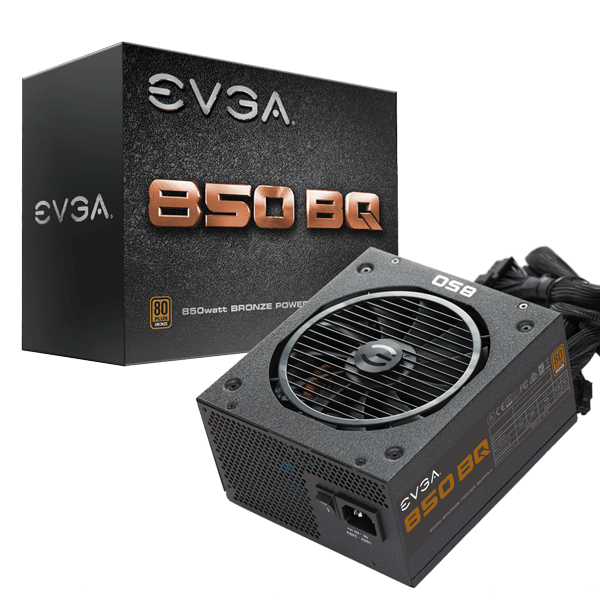
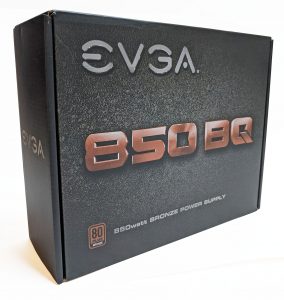
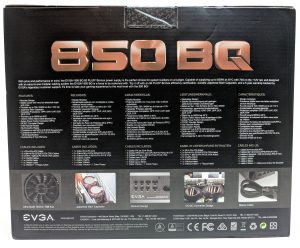
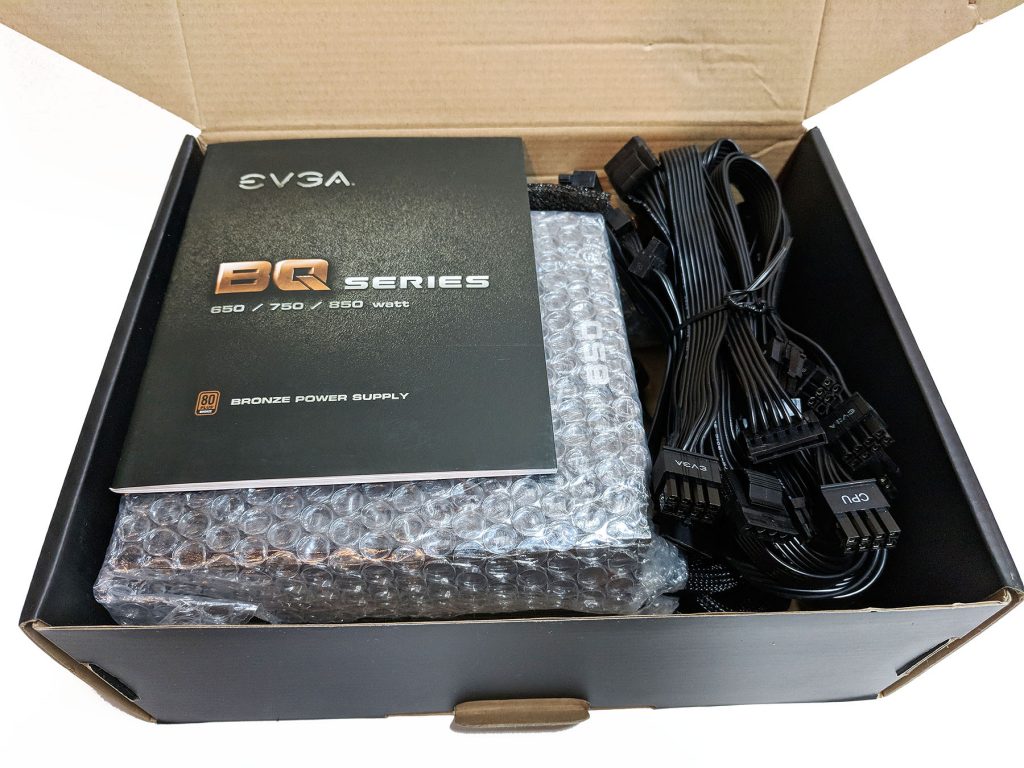
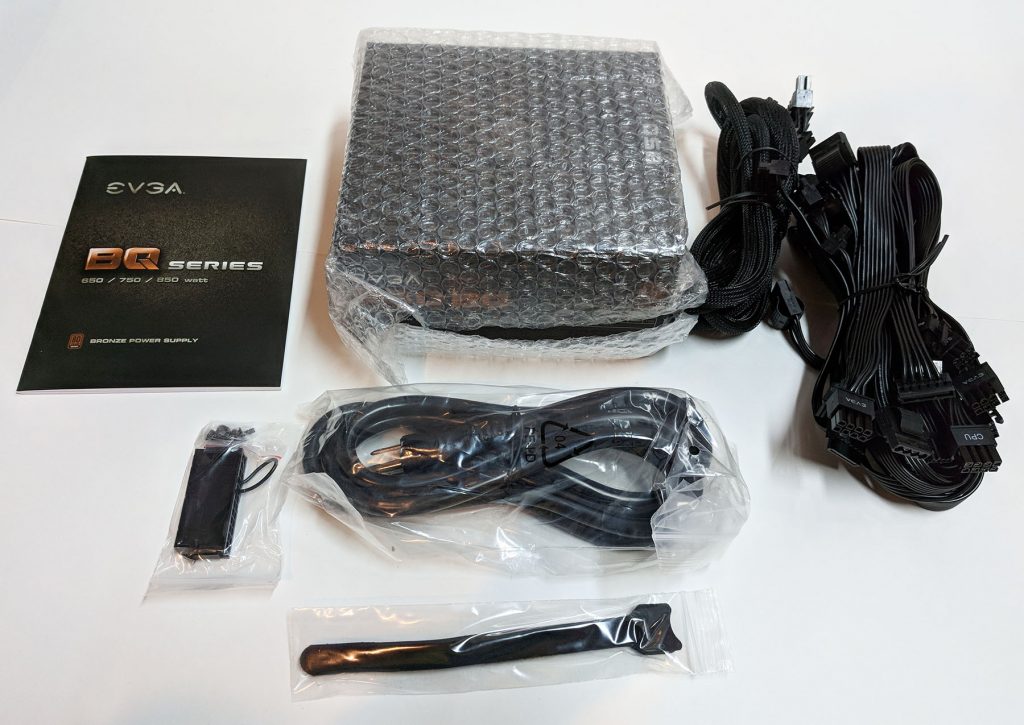
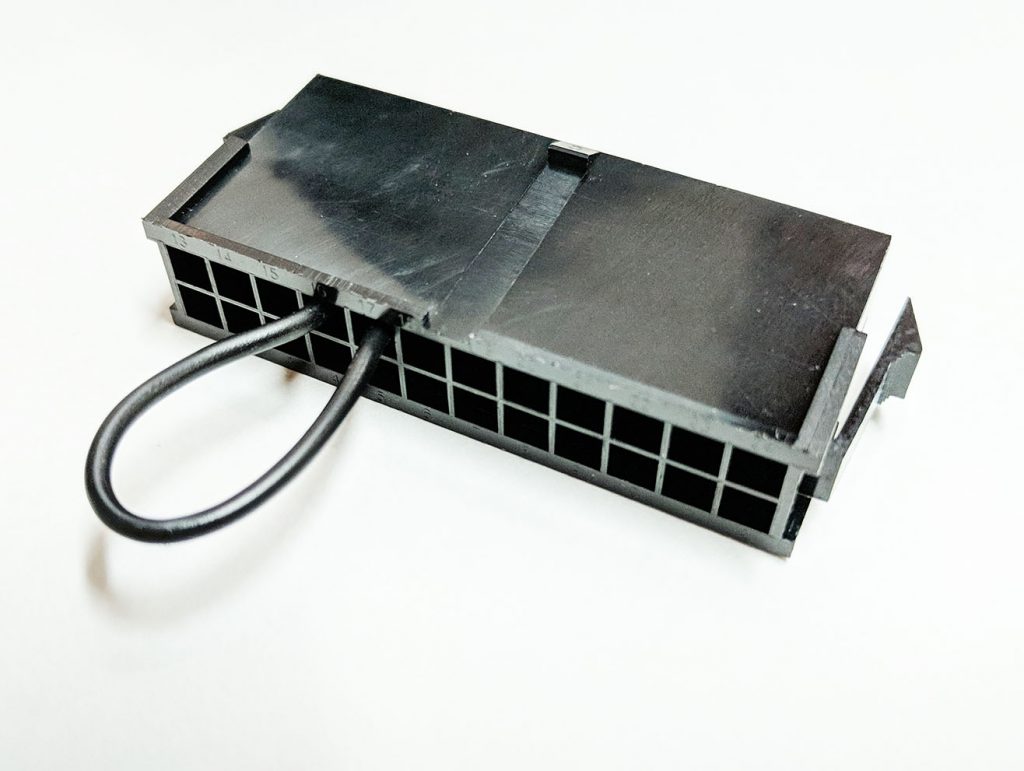

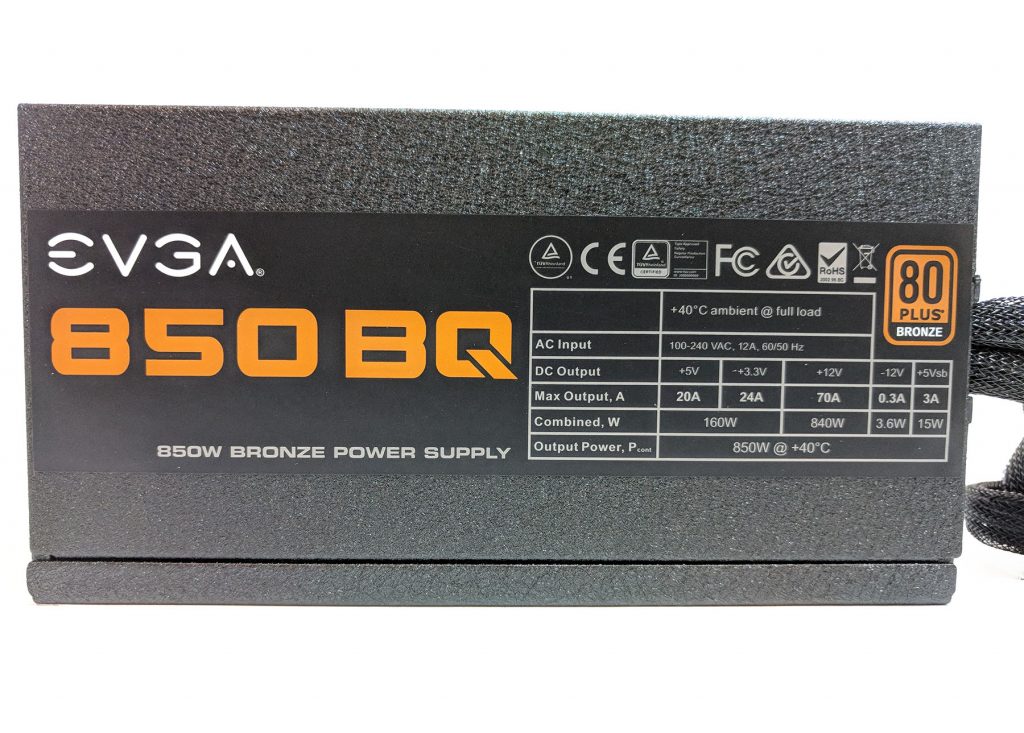

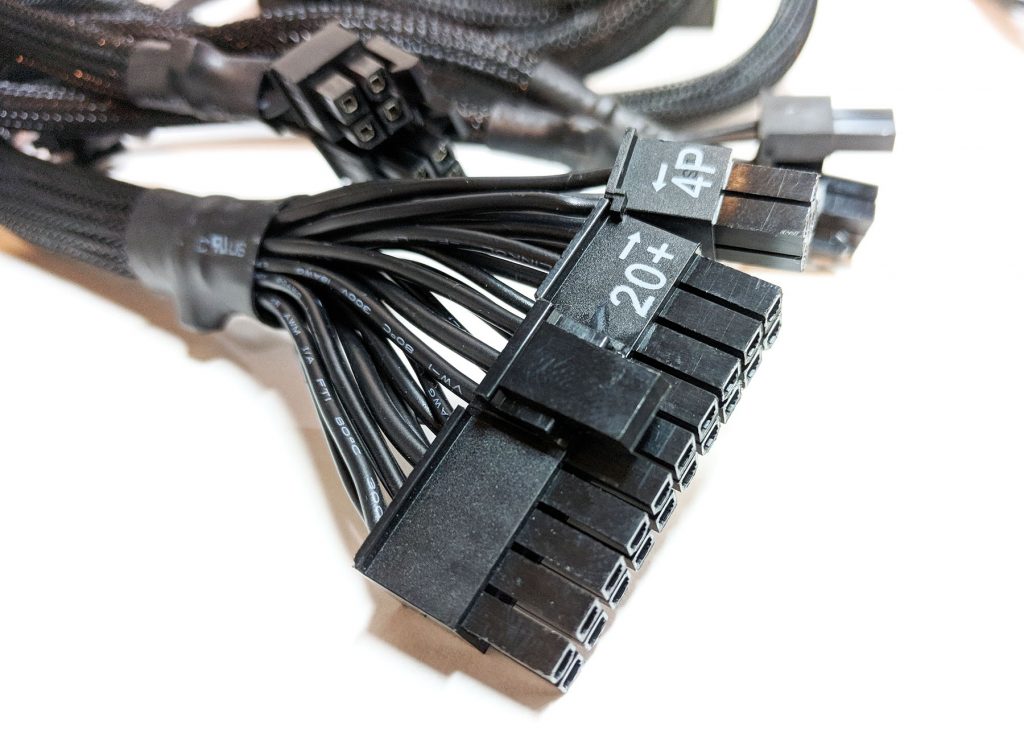


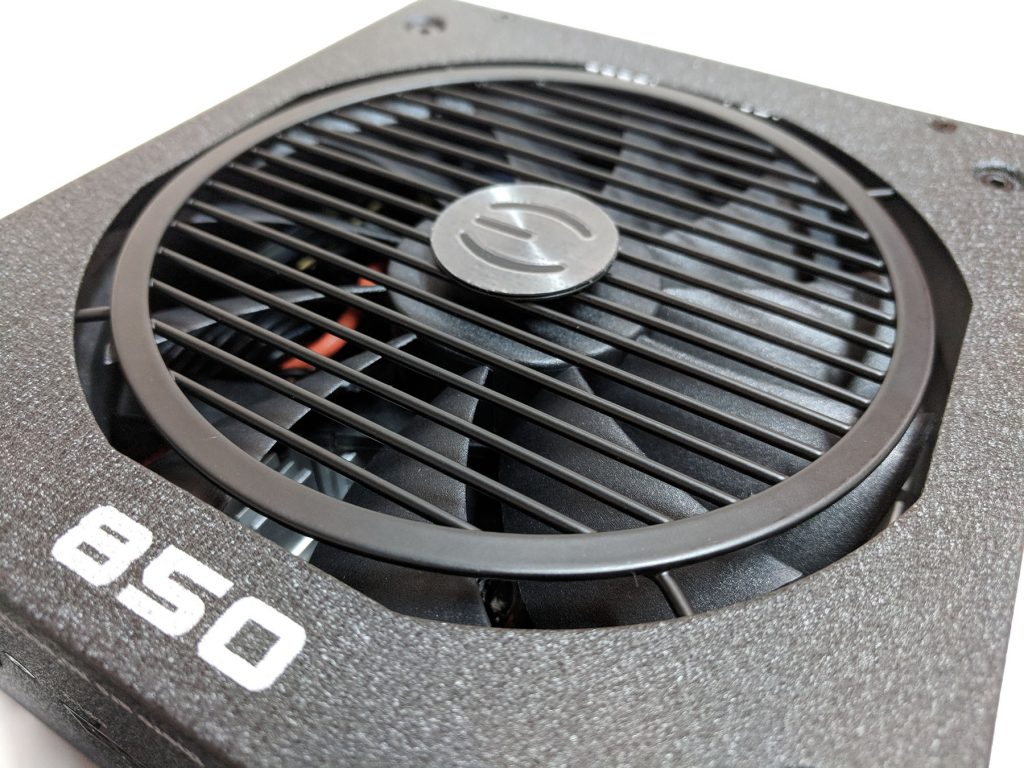
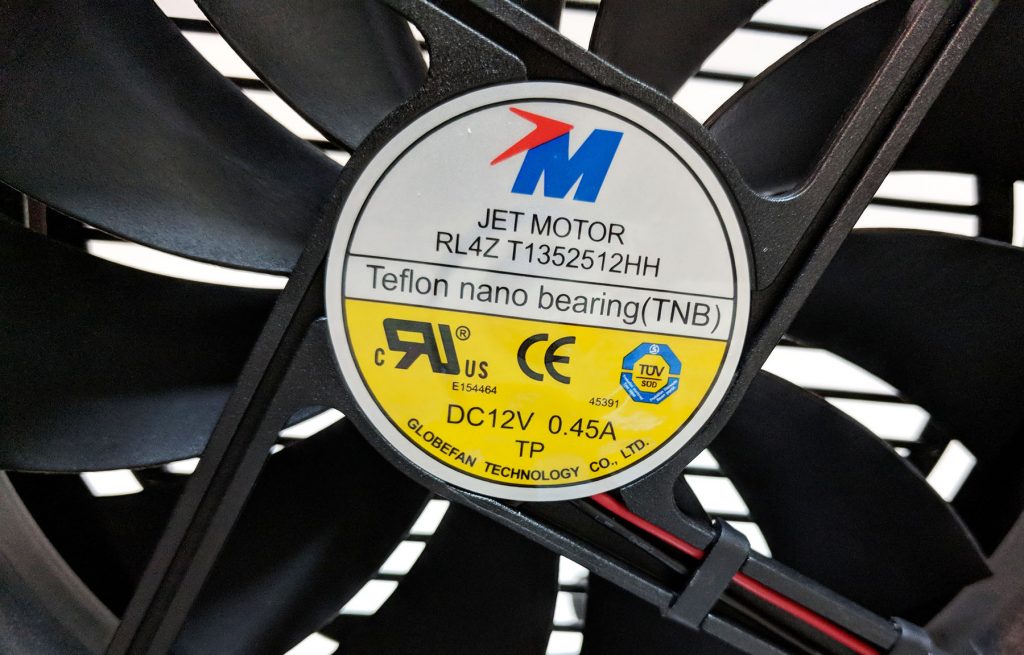
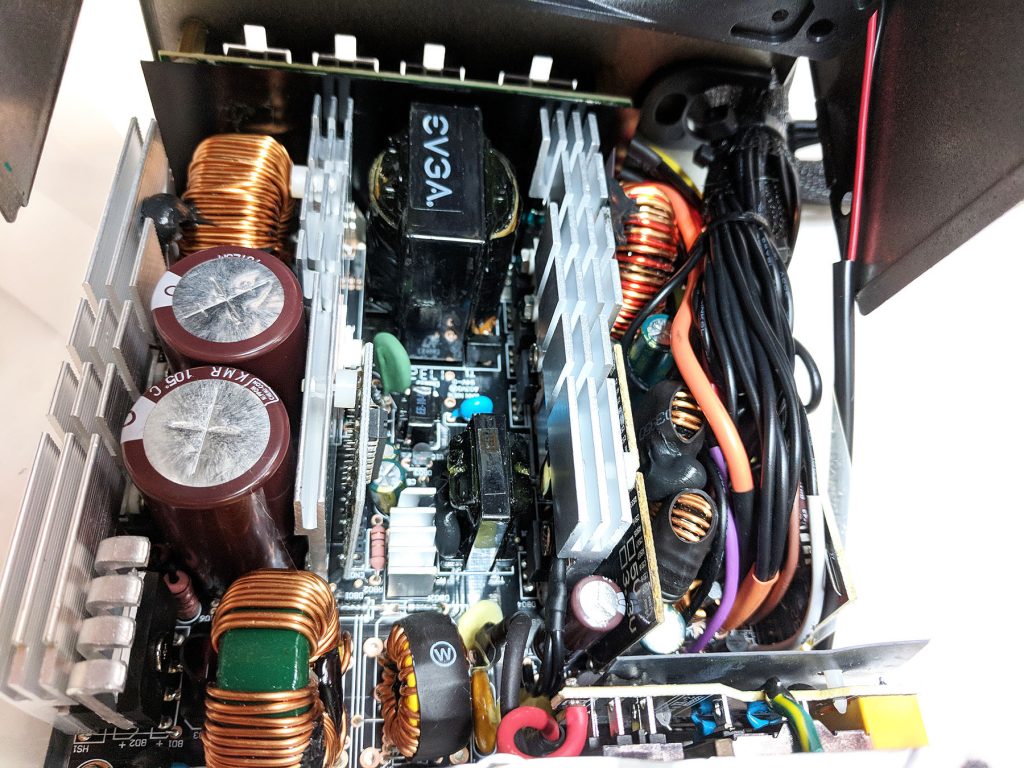
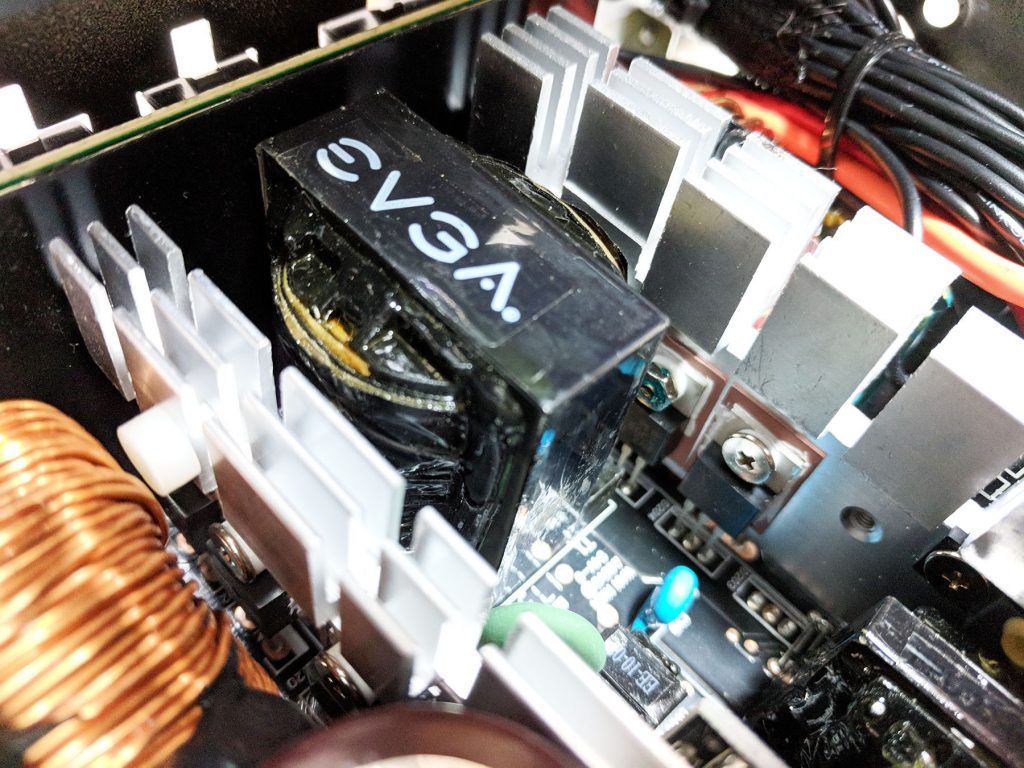
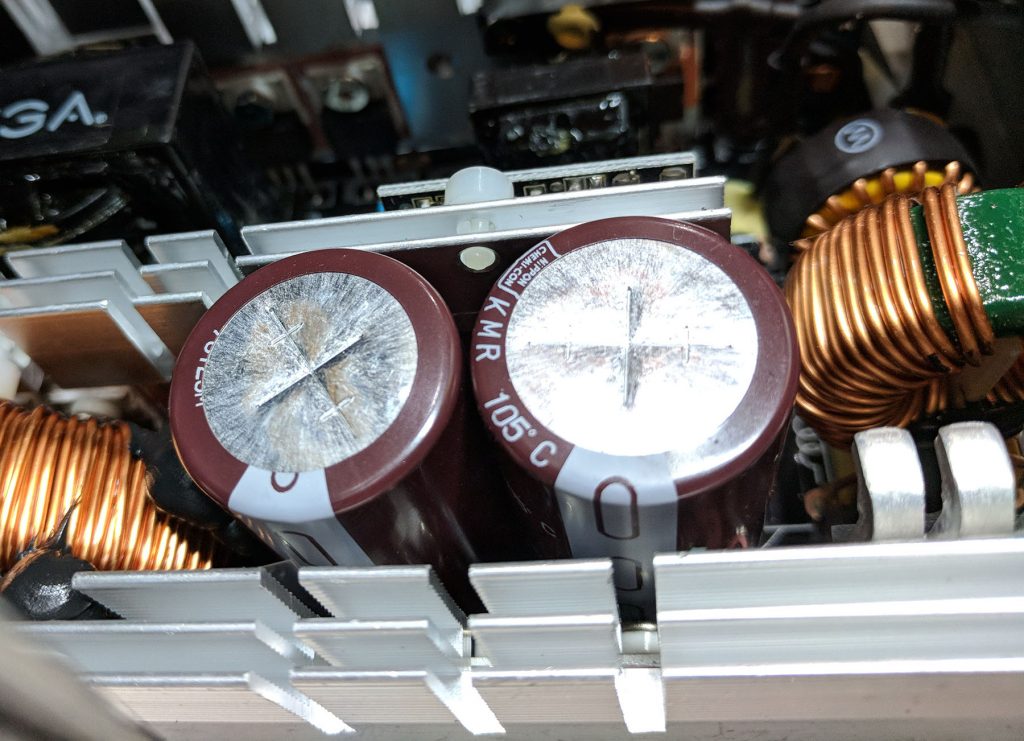
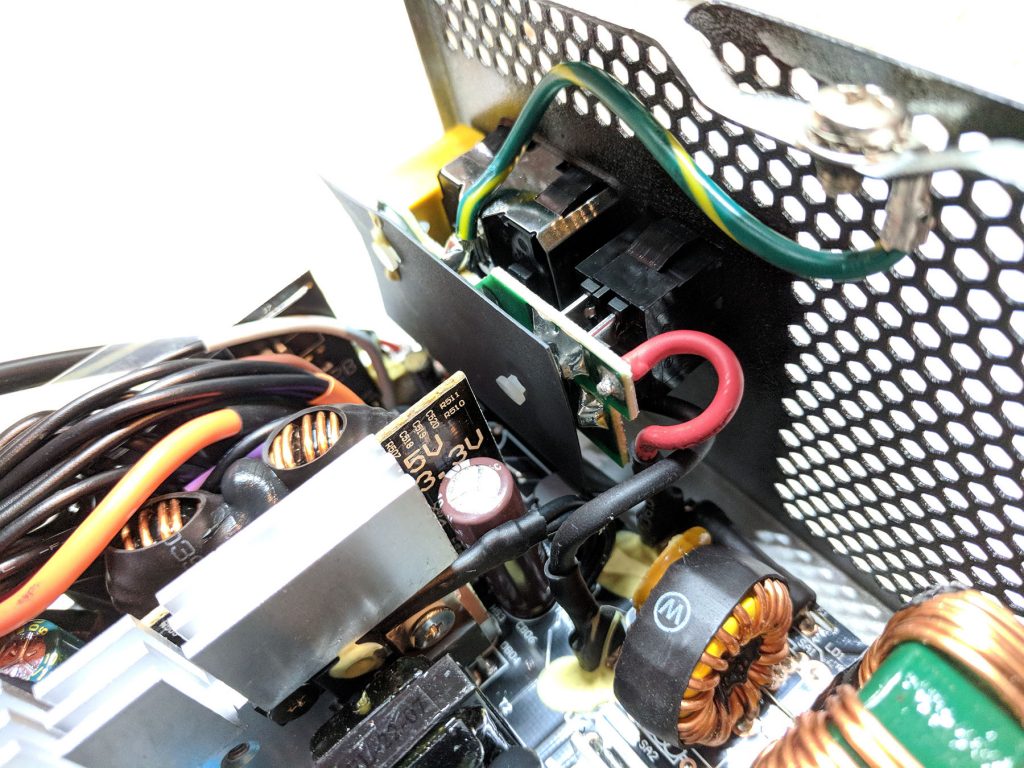
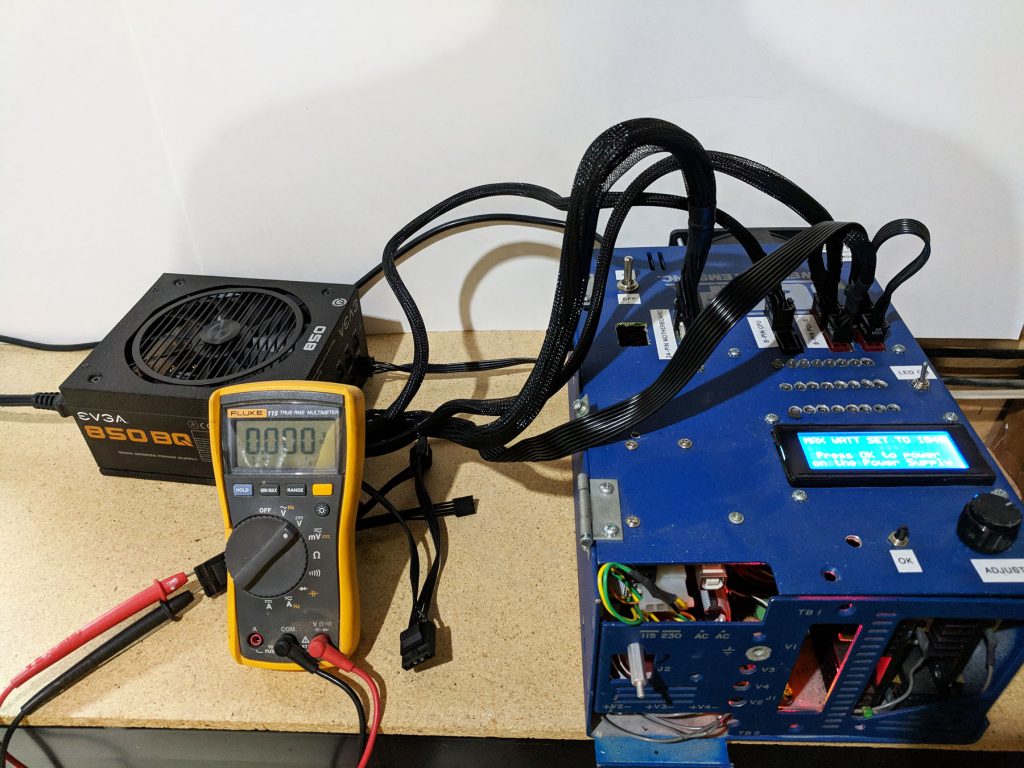
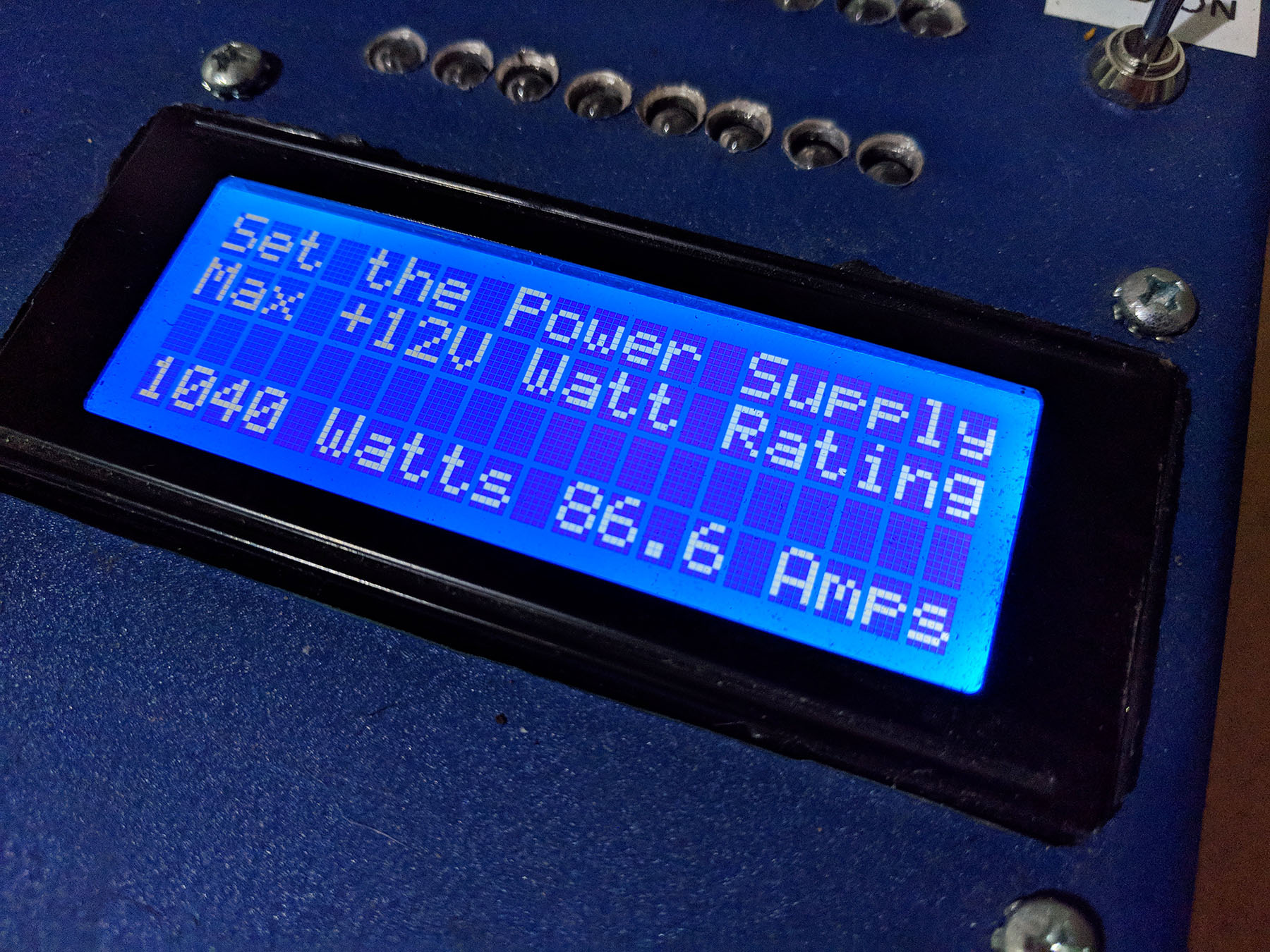
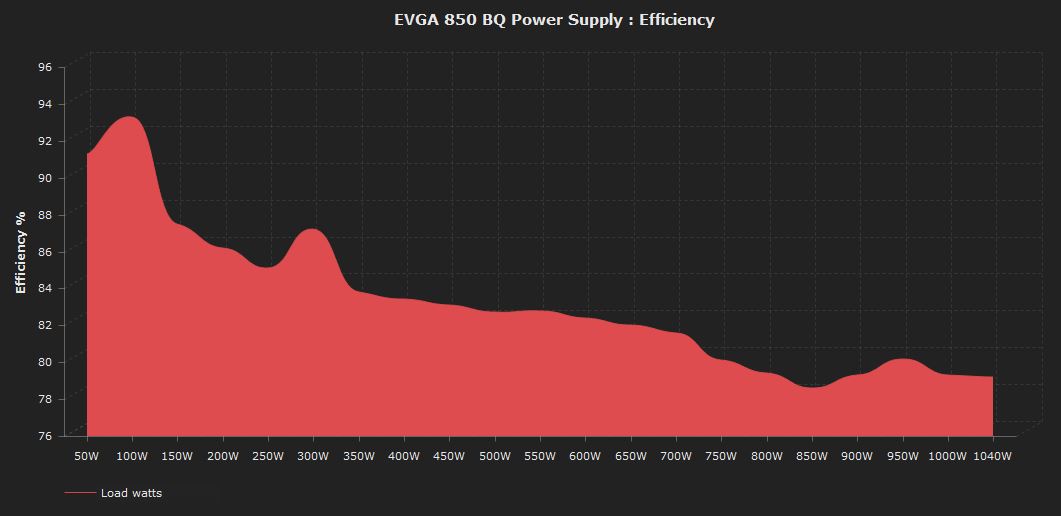
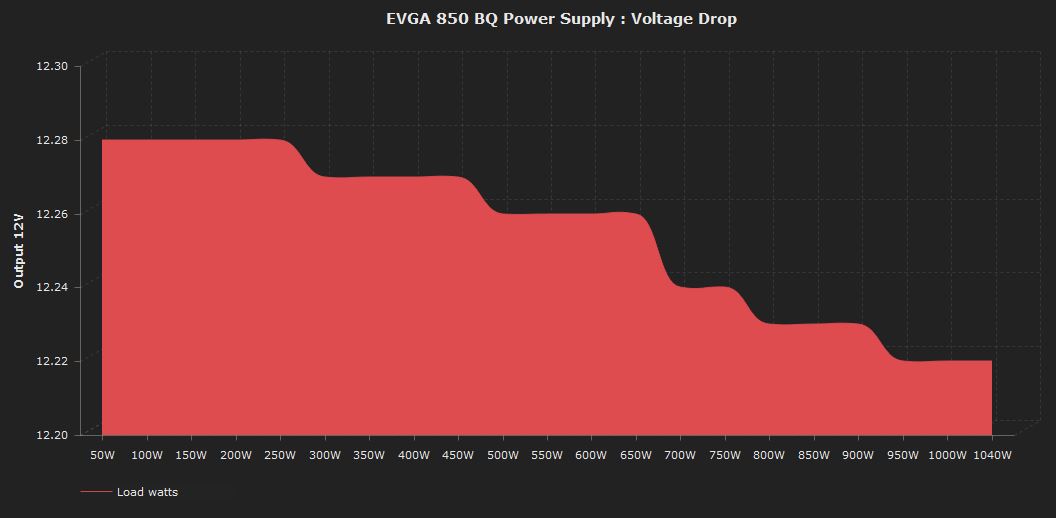



 (3 votes, average: 3.67 out of 5)
(3 votes, average: 3.67 out of 5)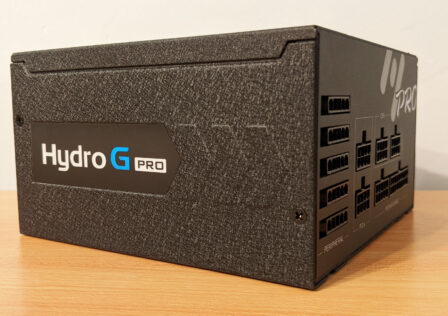
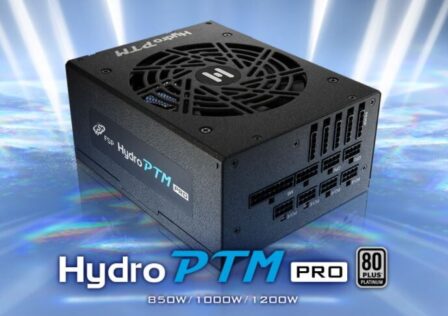
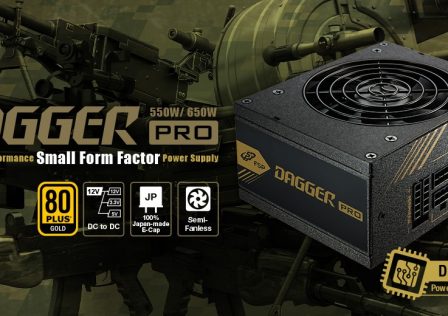


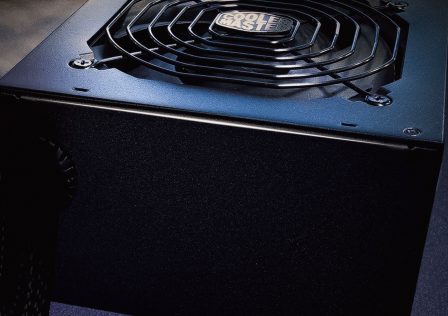



Almost every EVGA BQ PSU used on Mining didn’t last over 2 years. Either fan problems or components wear off thus starting buzzing-coilwhine.
I wouldnt recommend it. Its low quality unit, (Dont compare it to B3 or GQ Models)
Quality unit from Corsair manufacturer perspective is at worst to be chosen is TX model or RMX models. Example, RMX 550w is made on basis same as RMX 750w. RMX 850 and 1000 is made on different basis so they are different units.
Which Corsair would you recommend?
850W mostly modular well built solid performer for $100 is pretty wild. Though I am surprised to see 80 Plus Bronze PSUs still around, but that’s what is responsible for this price.
Bronze PSU’s are still pretty popular but anything less than that is pretty hard to find. Crazy to think my very first PSU was only 70% efficient but that was back before 80+ ratings.
Bronze PSU’s are still pretty popular but anything less than that is pretty hard to find. Crazy to think my very first PSU was only 70% efficient but that was back before 80+ ratings.
850W mostly modular well built solid performer for $100 is pretty wild. Though I am surprised to see 80 Plus Bronze PSUs still around, but that’s what is responsible for this price.
PCIE dugó az mire jo rajta ? lehet használni a vga hoz e?
PCIE dugó az mire jo rajta? lehet -e vga hoz használni ?
I have an EVGA 850 BQ and there is fan noise. I’ve had it for over a year now. Took it apart, yes voided warranty. I bought a new CPU quiet fan, case fans and all along it was the PSU fan. When laying flat it makes enough noise to cause me to tear it apart. I put a Noctua fan in it and wired that to the Motherboard and have the BIOS control fan speed. The voltage from the oem was 3.37 volts so that fan speed was always slow. So I set my fan speed curve to match… Read more »
Just bought this PSU to replace a 2 year old Evga 600B, as I wanted something stronger to handle future upgrades as I don’t think the 600B would have been able to handle things like high end graphics cards and cpu’s.
My system is a AMD Ryzen 5 1600 ASUS ROG STRIX B450-F Gaming motherboard, 16GB Gskill Ripjaws 3200mhz ddr4 ram (running at 2933Mhz), Sapphire Radeon RX590 Nitro+ 8G special edition, 1 m.2 NVME ssd, 1 samsung 860 evo ssd and a WD 7200rpm HDD.